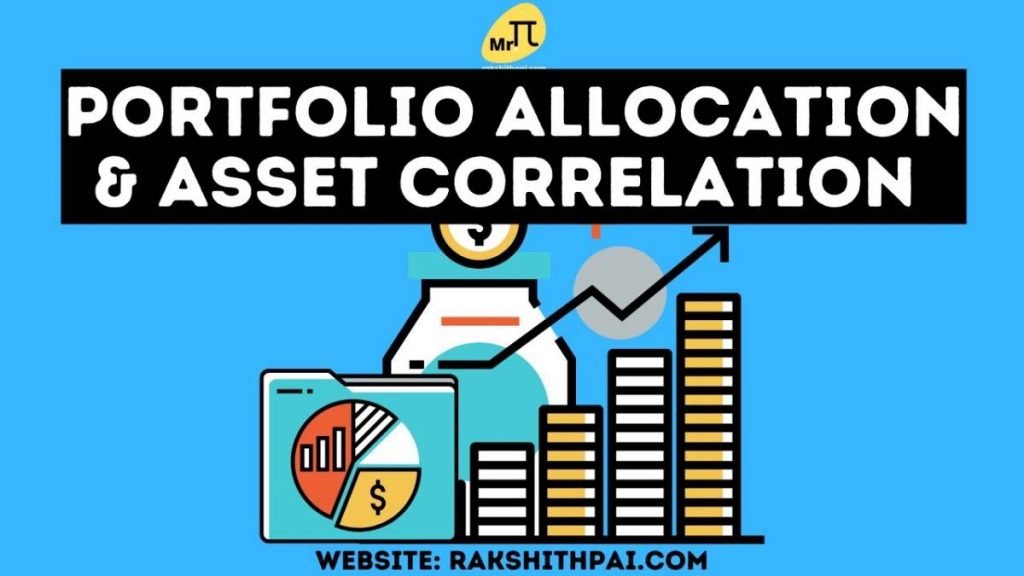Table of Contents
Monthly Income for Retirement needs:
Saving money during your career is one thing; investing it in a profitable and risk-averse venture is quite another. If you’ve accumulated a sizable sum from your earnings and income, say Rs. 50 lakh to Rs. 1 crore, you may be thinking about how to effectively invest it. While you have a variety of investment options available to you, each investment scheme carries an inherent risk that cannot be avoided.
For those seeking to cover post-retirement needs, investing in assets that provide multiple streams of income can be an excellent option. Additional income from these assets can be used to support monthly expenses, allowing you to better manage your money and worry-free retirement.
Finding a steady monthly income via a regular 9-5 job to cover your regular expenses is often considered normal. But, that’ll be done by everyone! We want you to be different.
Do something over and above what others do and hence, the following are the greatest investing ideas to help you earn a consistent income.
There are numerous investment programs available that are tailored to the investors’ unique financial needs. While investing, investors should prioritize monthly returns to fulfill immediate financial demands while also considering long-term capital growth with minimum risk!
To assist you in selecting the greatest investing options, we’ve covered the best monthly income plans in India.
Not just it! In this article, we’ll also concentrate on how to get access to such asset classes and their tax benefits, risk-return ultimately we discuss whether it’s your go-to option?
How to Approach Retirement?
Before investing, it is critical to establish proper financial knowledge and set clear priorities, and adhere to a well-defined plan for profiting from them. The following technique can help you get a good grip on investing in these types of schemes (mentioned in detail below):
Objectives
When you invest in income-generating schemes, financial independence should be your primary objective.
As with retired people, having multiple sources of income that could generate livable income is critical since they will keep them financially afloat if they can no longer rely on their previous source of income.
But, in order to attain such stable multiple streams of income & easy-going life, the work needs to be done now!
As a salaried individual, you can lessen your reliance on a single source of income by investing in income-generating schemes. The asset size of the schemes invested in determines the amount of revenue it could generate in the future.
With a larger asset base, one might anticipate higher monthly returns. Remember, we are setting financial objectives here. It’s not for a week, month, or even a year ahead! What we actually aim for is for such income that could take care of us forever!
Timeliness
If you are in your 20’s & the 30s all you have is time. In your 40’s & 50s, you have some time and some money. And, post-50s, you won’t have much time and less money! These words may sound harsh. But, it’s as real as it could get.
Timely investments will always come in handy when the need arises. Usually, Individuals approaching retirement age begin investing in these plans in order to profit from them after retirement. But, that’s where most go wrong.
Start investing as soon as possible. For more information check the following link:
- Investing tips in your 20s, CLICK HERE!
- Investing tips in your 30s, CLICK HERE!
You as a salaried individual must consider the unpredictability of your job conditions and invest in these plans as a cautious and prudent action in case of unpredictable and terrible events (job change, layoffs, etc.). It’s a wise step. Consider saving and investing at the earliest.
Priority
It means that you need to get your priorities straight!
Do you want to create a sizable portfolio that generates multiple streams of income or do you wish to own a portfolio that grows over time but doesn’t give any streams of income or maybe both?
You must understand that income-generating strategies benefit from the magnitude of assets accumulated over time. Thus, the larger the asset, the greater the income. If the objective is capital appreciation via investment programs, the concept may not qualify to generate monthly returns, as in this case.
Monthly income-generating methods may not be highly profitable, but they are unquestionably more valuable in times of need for few and the other case of the other few.
Strategy
As said earlier, what is your choice? A steady income or capital appreciation or maybe both. Your portfolio selection is based on this very choice you make now. Your investment strategies are laid down based on the portfolio selection you make.
This is critical to ensuring the return on investment in these schemes, as the greater the number of assets kept, the higher the return with minimum risk, we need to diversify.
Thus, you must conduct extensive research prior to selecting investment strategies and investing in the assets one intends to hold, as these assets will serve as your source of income.
In other words, Considering a retirement scheme with 7-8% interest. They are suitable for monthly income expecting individuals. But, they do not grow over time. And, for someone who wishes to earn wealth over time, an 8% interest-yielding asset doesn’t take you far in life.
Motivation
As said earlier, when you invest in income-generating schemes, financial independence should be your primary objective. But to attain such early retirement from the rat race. You should first ensure financial security and meet immediate needs, and then you need to go hunt for various options.
You should make it a habit to attain financial independence by not entirely depending on your salaries from now itself.
And, attaining such a life without having to go to work every day as we do now must be our sole motivation to work harder each passing day.
Top 10 Best Investment options for Regular Income:
Bank & NBFC Fixed Deposit
Fixed deposits offer interest rates of roughly 6% and above and are an excellent source of income for retirees. It does not allow for discretionary liquidity benefits and imposes a penalty on an early withdrawal. But, you can expect monthly interest over your deposit and this is a virtually risk-free way to invest one’s money.
Fixed deposit monthly income plans are an excellent investment option for individuals seeking a steady stream of income with the assurance of guaranteed monthly returns at a fixed rate of interest.
For example,
With a savings of Rs. 1 crore, a fixed deposit would yield a return of Rs. 6 lakh (considering 6% FD interest rates). This would amount to Rs. 50,000 in income per month.
These deposits can last up to ten years, depending on the bank and scheme. Investors have the option of making premature withdrawals before maturity.
Tax Deductions: Under Section 80TTB, a resident senior citizen can claim a deduction against interest on the deposit up to Rs.50,000 per annum. Non-Senior or a Non-resident Indian (NRI) cannot claim any deductions under this section.
Post Office Savings
Post Office Savings is one of the best-guaranteed plans to consider if you’re seeking income-generating investments. The return is guaranteed, and the annual interest rate ranges from over 6.5% to 7.5% per annum.
The Post Office Monthly Income Scheme is one of the best accessible solutions as it is PAN India accessible for investors with a zero-tolerance for risk and a desire to earn income.
Although this scheme has a 5-year maturity period, you can withdraw sooner if you complete one year of deposit. Withdrawing funds between one and three years after a deposit incur a 2% penalty. If you withdraw between 3-5 years after depositing, you may face a 1% deduction from the original amount deposited.
Tax Deductions: Under Section 80C, contribution to Post Office Savings Scheme is tax-deductible up to Rs.1,50,000 per annum.
Real Estate Property or REIT Funds
I need not explain the demand for property or the interest one possesses in the realty sector in India. And, that doesn’t seem odd given the fact the population we have, real estate will always be a booming sector given the location is favorable.
With that said, this is one of the greatest investments for ensuring not just capital appreciation but also a good revenue income stream.
Appreciation value is fairly substantial, exceeding inflation in some cases. While not everyone can afford to invest a large sum of money in real estate to produce income, choices such as Real Estate Investment Trust (REIT) Funds allow for small investments to generate revenue.
Indian Investable REITs:
- Embassy REIT.
- Mindspace REIT.
- Brookfield India REIT.
Senior Citizen Saving Scheme
If you are a senior citizen, a senior citizen savings plan (SCSS) is an excellent investment option. It is government-backed, and only senior citizens (over the age of 60) are eligible to invest. This service is accessible at select banks and post offices.
You must become a member of the plan within one month of retiring. And, SCSS is offering a 7.4% annual interest rate, payable quarterly. It will last five years. You can invest up to Rs 15 lakh in the SCSS. On the other hand, the scheme’s interest is added to taxable income and taxed at your marginal rate.
Tax Deductions: Under Section 80C, contribution to Senior Citizen Savings Scheme is tax-deductible up to Rs.1,50,000 per annum.
Public Provident Fund
The Public Provident Fund (PPF) scheme is a long-term investment vehicle that pays an acceptable rate of interest and yields on the principal invested. Interest so received are not taxable under the Income Tax Act up to 9.5%.
Annual contributions to a provident fund scheme must be a minimum of Rs.500 and a maximum of Rs.1.5 lakh. This investment can be made in full or in installments.
Tax Deductions: Under Section 80C, contribution to Public Provident Fund is tax-deductible up to Rs.1,50,000 per annum.
National Savings Certificate
National Savings Certificates (NSCs) are a type of fixed-income investment that can be opened at any post office branch. The plan is a project of the Government of India. It is a savings bond designed to encourage subscribers primarily low-to-moderate-income individuals to invest while deferring income tax.
As with Public Provident Funds and Post Office Fixed-Income Deposits, this program is a low-risk fixed-income product. You can purchase it at your local post office in your name, on behalf of a minor, or jointly with another adult. The NSC has a set maturity of five years. National Savings Certificates pay a fixed interest rate, which currently varies from 6.5% to over 7% per year. The government adjusts the interest rate on a regular basis.
Tax Deductions: Under Section 80C, contribution to National Savings Certificate is tax-deductible up to Rs.1,50,000 per annum.
National Pension System
The National Pension System (NPS) is a voluntary retirement savings plan designed to enable subscribers aged 18 to 65 years to make defined contributions toward planned savings, thereby assuring a pension in the future.
It is an attempt to find a long-term solution to the problem of providing a sufficient retirement income to each Indian resident. Once invested in NPS, normal exit from your NPS (Tier I account) is allowed only after attaining age 60 and above.
At the time of retirement, withdrawals of up to 40% of the acquired wealth in NPS are tax-free. However, the maximum amount you can withdraw at retirement is 60% of your acquired wealth and the balance of 40% of the funds must be used to purchase an annuity that will provide the subscriber with a monthly pension.
Tax Deductions: Under Section 80C, contribution to National Pension System is tax-deductible up to Rs.1,50,000 per annum. And, additional Rs.50,000 benefit is provided under setion 80 CCD (1B) over and above the Rs. 1.5 lakh benefits.
Dividend-Paying Stocks
The goal here should be to invest in stocks that produce consistent dividends over time. One must look for stocks that have historically produced consistent dividends. A dividend yield of roughly 1-3% is an excellent margin, as a consistent compounding stock provides capital appreciation over time with appreciation in dividends.
The securities market has largely outperformed market-wide fixed-income yielding assets, physical assets such as gold & silver, and even go far as to beat the annual inflation rate. Stocks are an excellent tool for investors to diversify their portfolios, and with the securities market experiencing long-term increases in index values, wealth building through stocks is typically higher than with any other financial instrument. But, when investing in equities, an investor must be prepared for volatility.
Dividends are a portion of a company’s profit earned during a fiscal year that is dispersed to shareholders on a pro-rata basis. Investors can consider stocks of firms that pay regular dividends and have excellent fundamentals to ensure the consistency of such income.
To know more about “Top 15 Highest Dividend Paying Stocks in India”. Check this article, CLICK HERE!
Corporate & Government Bonds
For risk-averse investors, government bonds are a great low-risk investment alternative. These bonds have a term of between five and forty years. Government bonds pay interest on a regular basis or make coupon payments at the rate determined by the government of India.
Government bonds have a set maturity date. The primary purpose of government bond issuance is to raise funds for government expenditure. They give steady income and are safe and reliable.
And when it comes to corporate bonds, there are numerous businesses that require additional money. Hence, they issue corporate bonds.
These are comparable to bank deposits, except that the investment is made with a corporate entity, which is less secure than a bank deposit. Corporate bonds offer a high rate of interest but come with additional risk.
Before investing in corporate bonds, it is necessary to ascertain the company’s financial strength and credibility. This can be accomplished through the use of credit ratings, analyzing the company’s financial report for their cash position & earnings capability.
Top 5 Government Bonds:
- Power Grid Corporation of India.
- National Highways Authority of India.
- NHPC Limited.
- Indian Railway Finance Corporation Ltd.
- Power Finance Corporation Ltd.
Top 5 Corporate Bonds Fund:
Instead of applying for individual bonds be it Government or Corporate bonds, an investor can go for “Bond Funds”, wherein a Professional Fund Manager manages the risk-reward options and invests your money in order to give you the best option available at the lowest risk.
- Franklin India Corporate Debt Fund.
- Aditya Birla Sun Life Corporate Bond Fund.
- PGIM India Premier Bond Fund.
- Kotak Corporate Bond Fund.
- HDFC Corporate Bond Fund.
Life Insurance Plus Savings Scheme
A guaranteed income insurance policy is another investment option for a consistent monthly income. These are life insurance policies that provide the investor with a guaranteed monthly payout following the maturity period.
Life insurance combined with savings is an excellent method to safeguard your family’s future while also ensuring financial security during your retirement days.
Unexpected circumstances might devastate your financial situation while depleting your savings. To be prepared for any unforeseeable event, it is critical to consider a life insurance plan, and with a combination of regular income and post-maturity savings, a savings plan such as this can make a significant difference.
Payment is flexible and reasonable, ensuring that investors are protected from the hardships of financial volatility. Individuals interested in this option may wish to investigate the schemes offered.
Top 5 Endowment Plans:
An endowment policy is simply a life insurance policy that, in addition to ensuring the insured’s life, assists the policyholder in saving regularly over a defined length of time so that he/she might receive a lump sum amount at policy maturity if he/she survives the policy term. This maturity amount can be used to meet a variety of financial demands, including paying for one’s retirement, children’s schooling and/or marriage, or purchasing a home.
- Tata AIA Life Insurance Secure Plan.
- Bajaj Allianz Save Assure.
- Kotak Assure Income Accelerator Plan.
- HDFC Life Sampoorn Samriddhi Plus Plan.
- HDFC Life Sanchay Plan.
Conclusion:
We do what we do throughout our life for the betterment of ourselves and our families. We learn & overtime start earning so that one day we may never have to. It’s the life after retirement and achieving the goal of early retirement from all the financial burdens that motivate us to take extra steps in life. Steps that could make us live our dreams sooner and better.
But, before all it begins, before we even imagine being financially free, we need to aim for financial security.
Financial security is critical, and covering the cost of living without a secondary income source might jeopardize a household’s financial stability. Individuals must consider their way of living and establish appropriate investments to enable them to maintain their lifestyle in the event of unexpected expenses.
Regular monthly revenue is critical to meeting daily expenses and ensuring that a household’s survival is never jeopardized, even during the most trying times, like the one we see today due to the Pandemic.
Income-generating investments not only provide financial security but also enable individuals to increase liquidity and explore additional investment possibilities through a secondary source of income, thereby increasing wealth and assuring financial independence.
While different individuals have various financial and investment needs, one must agree that everyone wishes to assure a consistent source of income regardless of the circumstances. It is critical to choose from the different investment alternatives available after taking into account one’s financial situation and expectations of benefiting from the schemes in order to ensure a continuing income regardless of whether one is employed or retired.
With this article, I have made efforts in regards to bringing the information that could one day help you achieve your financial goals and most importantly, financial freedom.
Disclaimer: All the information on this website is published in good faith and for general information purpose only.









